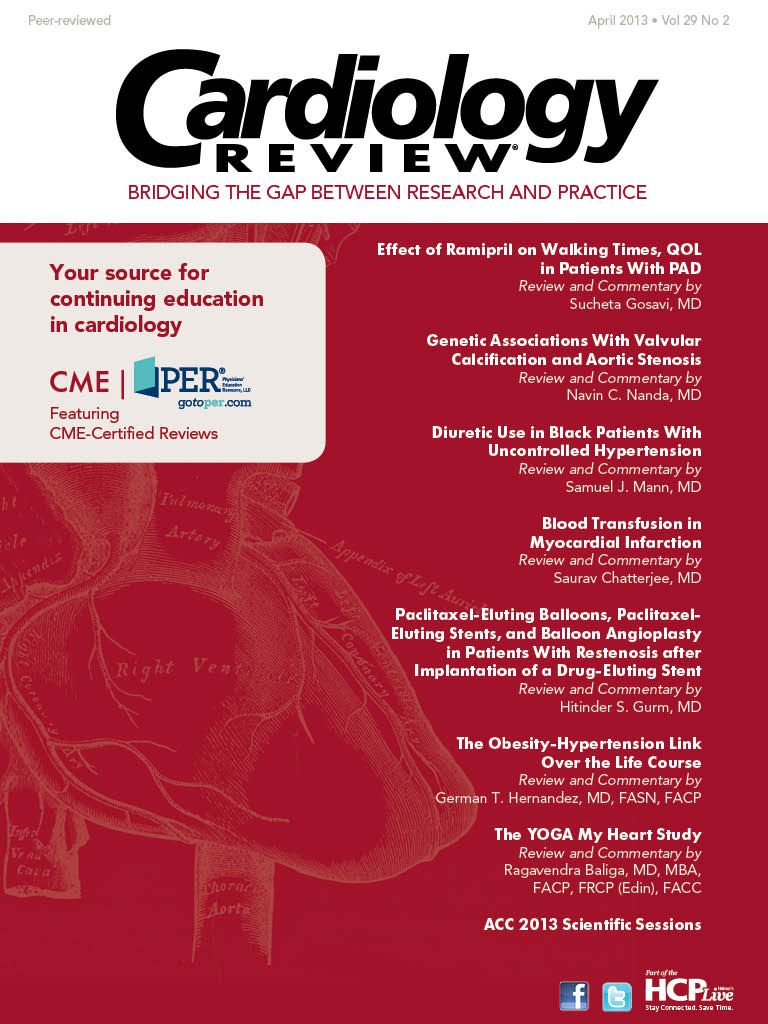News & Trends
Warning About Risk of Potentially Fatal Heart Rhythms With Azithromycin
The FDA has issued a Drug Safety Communication concerning azithromycin (Zithromycin, Zmax) because it can cause abnormal changes in the heart’s electrical activity that can lead to a potentially fatal irregular heart rhythm. The FDA is advising health care professionals to consider the risk of torsades de pointes and fatal arrhythmia when considering treatment options with azithromycin or alternative antibacterial drugs.
Patients who are at higher risk include:
• Patients with known prolongation of the QT interval, a history of torsades de pointes, congenital long QT syndrome, bradyarrhythmias, or uncompensated heart failure.
• Patients on drugs known to prolong the QT interval.
• Patients with ongoing proarrhythmic conditions such as uncorrected hypokalemia or hypomagnesemia, clinically significant bradycardia, and in patients receiving Class IA (quinidine, procainamide) or Class III (dofetilide, amiodarone, sotalol) antiarrhythmic agents.
• Elderly patients and patients with cardiac disease may be more susceptible to the effects of arrhythmogenic drugs on the QT interval.
• The potential risk of QT prolongation should be placed in appropriate context when choosing an antibacterial drug: Alternative drugs in the macrolide or fluoroquinolone drug classes also have the potential for QT prolongation or other significant side effects that should be considered when choosing an antibacterial drug.
Reports of adverse events involving azithromycin should be made to the FDA MedWatch program using the information in the “Contact FDA” box on the FDA’s website: www.fda.gov/ drugs/drugsafety/ucm341822.htm.
Pilot Study Unveils Breath Test for Heart Failure
A prospective study of a test that uses a single puff of exhaled air to diagnose heart failure (HF) was published online in a research letter in the April 2013 Journal of the American College of Cardiology.* The study was conducted by Michael Samara, MD, and colleagues at the Cleveland Clinic.
The study tested the breath test technique they developed in 25 consecutive patients versus 16 controls, using ion-flow tube mass-spectrometry (SIFT-MS), to detect significantly higher levels of acetone in the exhaled breath of patients (811 parts per billion [ppb] versus 187 ppb; P = 0.01). All samples were evaluated within 2 hours of collection.
There was also a significant difference in the median amount of detected pentane (40 ppb vs 22 ppb; P = 0.03).
The authors wrote that their findings demonstrate the feasibility of single exhaled breath analysis in acute decompensated HF, and provided pilot evidence to support SIFT-MS technology. “Exhaled breath constitutes a complex mixture of hundreds of volatile organic compounds that could potentially be used as a safe and noninvasive method of diagnostic and therapeutic monitoring,” they conclude.
The researchers said there were significant differences in baseline hypertension and baseline estimated glomerular filtration rate in the HF patients versus controls, but there were no significant differences in the age, body mass index, comorbidities, and active smoking that could compromise the exhaled metabolites. All of the patients tolerated the act of giving the breath sample, even those in intensive care or those being monitored invasively. Larger, prospective studies of the technique are needed to further evaluate the promise of this technology, the authors conclude.
*J Am Coll Cardiol. 2013;61(13):1463-1464. doi:10.1016/j.jacc.2012. 12.033.
Physician Burnout a Common Problem
Medscape’s 2013 survey of US physicians focused on the links between physician burnout and their lives outside of practice. Burnout was described as a loss of enthusiasm for work, feelings of cynicism, and a low sense of personal accomplishment.
The survey found that 39.8% of respondents said they were burned out; 60.2% said they were not. Among the 24 physician specialties ranked, the 2 with the highest percentage of burnout were emergency medicine (52%) and critical care (50%). Generalists were among the top 10 most burned out physicians—family physicians, ob/gyns, internists, and general surgeons. The least burned out specialties were pediatricians, rheumatologists, psychiatrists, and pathologists. Cardiologists were ranked 16th out of 24, with about 36% reporting burnout.
The reasons cited as causing burnout among the physicians surveyed include excessive workload, loss of control, too many bureaucratic tasks, too many hours at work, and the impact of the Affordable Care Act. On a scale of 1 to 7 (1 = not at all important and 7 = extremely important), these factors averaged a rating of over 4, as did insufficient income. The least important stress factors (but still scoring >3) were relationships with colleagues and patients.
More female physicians reported burnout (45%) than did male physicians (27%), likely attributable to women tending to enter the generalist professions rather than the lower-stress subspecialties. Burnout peaks at midlife (46-55 years of age), and then decreases thereafter.
When asked to rate happiness at work, burned-out physicians give low scores compared with their more satisfied colleagues. Although they are much happier at home than at work, they were still less happy than non-burned-out peers. Dermatologists and pediatricians rated themselves at the low end of the severity scale, while surgeons and ob/gyns rated themselves at the high end.
The survey also examined physicians’ assessments of their favorite pastimes, vacation habits, volunteering, lifestyle habits, health, financial condition, spirituality/religious involvement, political affiliations, marriage, children, and citizenship.
